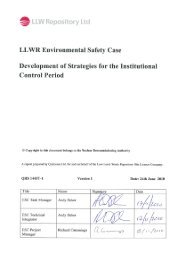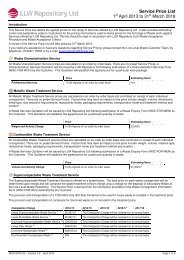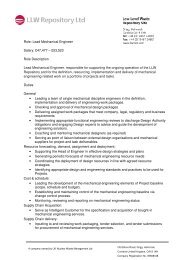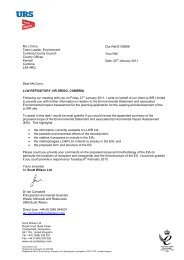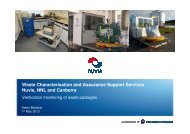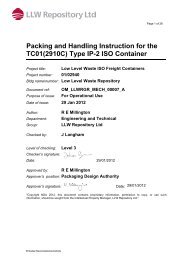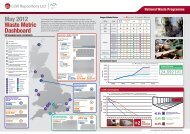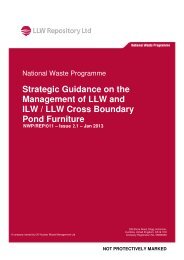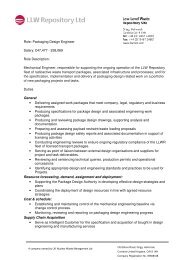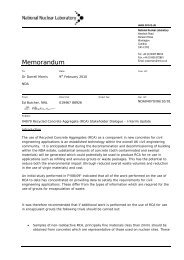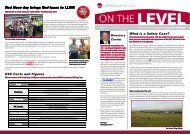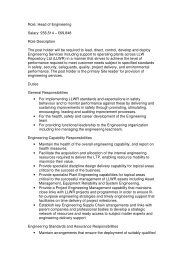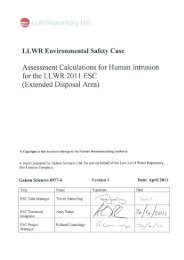Independent Peer Review of - Low Level Waste Repository Ltd
Independent Peer Review of - Low Level Waste Repository Ltd
Independent Peer Review of - Low Level Waste Repository Ltd
Create successful ePaper yourself
Turn your PDF publications into a flip-book with our unique Google optimized e-Paper software.
<strong>Peer</strong> <strong>Review</strong> <strong>of</strong> LLWR Response to S9R2LLWR_2008-8-2Version 13 <strong>Peer</strong> <strong>Review</strong> <strong>of</strong> the 2008 Performance Update3.1 Assessment Context3.1.1 Assessment Purpose and Philosophy24. Volume 5 <strong>of</strong> the submission (LLWR 2008e) addresses the post-closureradiological performance <strong>of</strong> the LLWR. LLWR (2008e) recognisesclearly that the volume ‘does not present a comprehensive post-closureperformance assessment’, and that ‘The uncertainties related to modelsand data are not fully explored as will be required within the 2011 PCSC;hence the results are to some extent interim’. The peer review panelacknowledges these caveats and notes that they must be borne in mindwhen considering the implications <strong>of</strong> the work.25. In many places LLWR (2008e) describes particular assumptions,modelling approaches or parameter values as ‘cautious’, meaning thatthey lead, in the SLC’s view, to an overestimate <strong>of</strong> dose or risk. The peerreview panel considers that there is a clear logic to most <strong>of</strong> the SLC’sstatements <strong>of</strong> this type (e.g., regarding the source term). However, thepeer review panel considers that there are also instances where thetreatment or omission from the assessment calculations <strong>of</strong> particular FEPs(Features, Events, Processes) means that it is not possible to be confidentthat the assessment is cautious in an overall sense. Such instances relate,for example, to the possible occurrence <strong>of</strong> further exposure pathwaysassociated with coastal erosion, to assumptions made in the engineeringperformance assessment, and to assumptions regarding the effectiveness<strong>of</strong> passive institutional controls. Our comments on these examples aredocumented more fully in the following sections. The review panelconsiders that a more thorough treatment <strong>of</strong> uncertainty will be necessaryfor the next safety case.3.1.2 Regulatory Criteria and Assessment Endpoints26. LLWR (2008e) presents arguments as to what are the appropriatereference levels to use when considering assessed doses and/or risksassociated with the LLWR trenches and vaults under differentcircumstances. A summary <strong>of</strong> the SLC’s position is given in Table 2.1 <strong>of</strong>LLWR (2008e).27. First, LLWR (2008e) proposes that a dose rate <strong>of</strong> 10 mSv/year should beused as a reference level when considering the impacts from the trenches,however they arise (whether as a result <strong>of</strong> natural processes or as a result<strong>of</strong> inadvertent human intrusion). The peer review panel notes that thisproposal is not consistent with the approach taken previously by the EA,which has argued that, at least for releases as a result <strong>of</strong> natural processes,the risks associated with the trenches should be considered together withthose from the rest <strong>of</strong> the site and should be compared to the GRA targetTerraSalus Limited 7 2 September 2008



